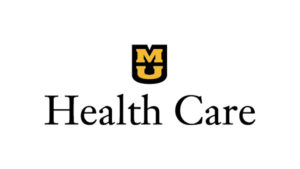New Hip Offers Pain-Free, High-Quality Life
Mary Mason is an athlete who enjoys a bevy of exercises.
Several years ago, she and her husband moved to Linn Creek near the Lake of the Ozarks so they could spend their days waterskiing.
Her desire to stay fit took a serious turn in 2013 when she experienced a brain aneurysm. Surgery kept her from having a stroke, but her doctors warned her that staying active would be more important than ever.
“I always had good blood pressure and heart rate,” Mason said. “It was quite a shock to find out I had an aneurysm. After my recovery, I took my physical health extremely seriously. I knew good nutrition and regular exercise were key for helping me keep the risk of another aneurysm at bay.”
Mason continued her active lifestyle, ignoring the hip pain that began soon after her recovery.
“It started as an ache in my thigh and groin, so I thought it was my muscles and it would eventually go away,” Mason said. “Instead, it just kept getting worse.”
Her pain go so bad that she developed a limp, couldn’t sleep on her left side and had trouble getting in and out of her car. But for Mason, the worst part about her increasing pain was that it was keeping her from exercising.
“I was pretty terrified,” Mason said. “I felt like I had to exercise or I would be putting my life on the line. I wanted to do everything I could to keep from having another aneurysm, but the pain was so bad I just couldn’t stay active.”
Mason sought help at University of Missouri Health Care in Columbia. Benjamin Hansen, MD, orthopaedic surgeon at the Missouri Orthopaedic Institute, told her that her pain was caused by arthritis and cysts that had developed in her hip. The best course of treatment: a complete hip replacement.
Three weeks after her initial diagnosis, Mason underwent a total hip replacement. Hansen chose to perform the procedure through the front of Mason’s hip instead of the traditional posterior approach.
“There are several advantages to using an anterior approach for a hip replacement,” Hansen said. “This technique allows surgeons to avoid cutting through major muscles at the back of the hip. Leaving those muscles uncut allows for a quicker, less painful recovery. It also reduces the risk that the new hip will dislocate because those posterior muscles naturally hold the hip joint in place. The anterior approach also allows the patient to recover more range of motion. So for an active patient like Mary, this was the best option.”
Mason was shocked at how quickly she recovered from her surgery.
“I immediately noticed the pain I was used to disappeared,” Mason said. “I felt so good I was ready to go home the next day. I was so thankful that Dr. Hansen and his team listened to me. I felt like they gave me the personalized care I needed.”
Mason was able to start physical therapy just a few weeks after surgery. Since then, she’s been able to gradually increase her activity level. She started with yoga and walking on the treadmill. She eventually graduated to weightlifting, spin classes, hill climbing and the rowing machine. Today, a year after surgery, she’s back to daily exercise and waterskiing in the summer.
Hansen says Mason’s case isn’t atypical.
“I see patients respond like this almost every day,” Hansen said. “This is why we do these total joint replacements. We are able to give our patients a pain-free, high-quality life. It’s extremely rewarding.”
And Mason agrees.
“They really have given me back the quality of life I had been missing for some time. I am absolutely pain-free, and my mobility is wonderful,” Mason said. “I’m so thankful for everything that Dr. Hansen, the nurses and all of the other caregivers did for me.”
– This article provided by SMSG sponsor MU Health Care







Recent Comments